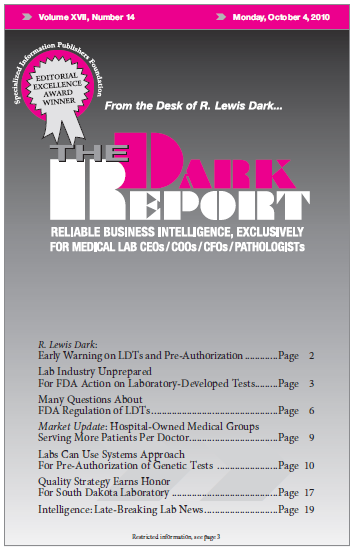CEO SUMMARY: Ask most pathologists and laboratory administrators about the FDA’s intent to regulate laboratory-developed tests (LDTs), and they will likely answer that it is to control web-based direct-to-consumer lab testing companies and the rapidly- growing number of proprietary tests. Although that is true, any move to regulate LDTs also has the potential to cover …
Many Questions About FDA Regulation of LDTs Read More »
To access this post, you must purchase The Dark Report.


